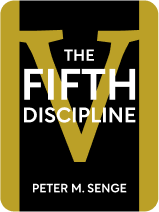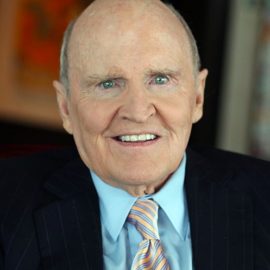

This article is an excerpt from the Shortform book guide to "The Fifth Discipline" by Peter M. Senge. Shortform has the world's best summaries and analyses of books you should be reading.
Like this article? Sign up for a free trial here.
What exactly is “systems thinking” in Peter Senge’s The Fifth Discipline? How does systems thinking relate to the other four disciplines?
Systems thinking is the fifth discipline in Peter Senge’s framework for creating a learning organization. Systems thinking ties the other four disciplines together to create a cohesive management system where all the different parts work well together to produce the best possible results.
Here’s how you can implement the systems thinking discipline at your organization.
What Is Systems Thinking?
Most people are taught to break problems apart when trying to solve them. This is because supposedly, it’s easier to learn about one thing at a time and then put the pieces together to see how the whole system works. However, Senge argues that life isn’t made of separate elements; rather, the world is made of countless different elements that come together to form systems. By trying to separate those elements from each other, you misrepresent how the world works and thus make it impossible to really understand what you’re observing. This brings us to the fifth discipline: “systems thinking.”
Senge says that businesses often suffer from a lack of systems thinking. Instead of operating as one big system—understanding that every part of the business will influence every other part—many companies try to operate as many individual units, with each person or group only paying attention to their own tasks. As a result, the different parts of the organization may interfere with each other without realizing it.
For example, an innovation allowing the company to ship more goods to a warehouse might seem beneficial, but it will put added strain on the warehouse employees and might lead to them quitting. Unless the company also ensures that the warehouse is prepared for the added workload, this apparently profitable innovation will hurt the company in the long run.
Think in Loops, Not Lines
Senge says that people naturally look for linear, cause-and-effect relationships because they’re clear and easy to understand. However, systems thinking relies on feedback loops. This means when you take an action, that action creates some effect; that effect eventually circles back around and influences the cause (you), often in an unexpected way.
Understanding and incorporating feedback is a crucial part of running an organization. Studying feedback is how you see the effects of your actions on the entire system, rather than just the part of it your decision directly altered.
One example of a feedback loop is an investment bubble: Investors overvalue a company or industry and invest heavily in it, which drives up its value. That causes others to overvalue it even more and invest even more, creating a loop of accelerating investment. However, this loop doesn’t last forever: Eventually, market forces catch up with the investment, the bubble bursts and the value plummets, and those investors unexpectedly lose a great deal of money.
Systems thinking could prevent you from being one of those unlucky investors—an accurate view of the market as a whole, rather than a narrow view of a single skyrocketing investment, could help you avoid bad investments or cash out before the bubble bursts.
The Results of Your Actions Take Time to Reveal Themselves
This brings us to another of Senge’s rules: What’s happening today is the result of what you did yesterday. He means that, quite often, you’ll have to wait to see the results of what you do. “Yesterday” isn’t literal—sometimes it takes weeks or months for the feedback to loop back around to you.
Be aware of that delay because otherwise, you might overreact: You take an action but don’t get the expected feedback right away, so you assume that whatever you did isn’t working. As a result, you either double down on your strategy or change your approach entirely. Then, by the time the feedback from the first action reaches you, you’ve already done something else, so you mistake it for the feedback from your second action. The cycle continues, and it usually results in you wildly swinging from one strategy to another.
In short, Senge urges you to be patient, be cautious, and not overreact to delays. Make sure you’ve got a sense of the big picture—including how long it might take for feedback to reach you—before responding to feedback or the lack of it.
(Shortform note: This delay in getting feedback may actually be beneficial. For example, a study in which participants were asked to answer various trivia questions found that a small delay between answering and being told the correct answers improved participants’ focus and memory. In other words, because you have to wait and pay attention to get the feedback from your actions, you’re more likely to remember and incorporate that feedback into future decisions.)
It’s also important to realize that there are countless other systems at work in and around your organization. In fact, Senge says that we could view the whole world as a system made up of countless smaller systems, Therefore, a change you make to one part of your organization could have effects that stretch beyond the organization itself, and those effects could loop back around to your organization in ways that you didn’t foresee.
For example, when Ford started mass-producing cars, company executives probably didn’t realize that they’d be contributing heavily to global warming. However, as climate change became more of a concern, Ford (and other car manufacturers) were pressured to come up with more environmentally friendly vehicles and production methods.
| Taleb’s Perspective on Our Complex World Risk analyst Nassim Nicholas Taleb agrees with Senge’s interpretation of the world as a single immensely complex system. However, while Senge says that we need to constantly learn more about the world so that we can act more effectively within it, Taleb believes that the world is too complex to ever really understand—the only way we can learn is through trial and error (what Senge would call feedback). Furthermore, Taleb believes that this is a good thing; having to learn through trial and error means that we have to experience personal risk. Having something to lose—having Skin In the Game, as Taleb puts it—forces us to act carefully, thoughtfully, and ethically. In contrast, someone with no skin in the game would have no reason to care if the entire system collapsed. |
The 2 Kinds of Feedback
There are two types of feedback. The first type is called positive feedback—or, as Senge calls it, reinforcing feedback. This type of feedback naturally builds and intensifies, with each effect becoming the cause of the next event.
Positive feedback can either be good or bad for your company. You can be caught in a virtuous cycle where the feedback loop’s momentum pushes you toward your goals—however, you could also get caught in a vicious cycle, where the momentum works against you.
The other type of feedback is negative feedback, which Senge calls balancing feedback. Whereas positive feedback builds upon itself, this type of feedback moves toward a balance point where the cause-effect-cause cycle naturally stops. If that balance point is something beneficial for you or your company, this cycle is helpful and you should let it continue.
For example, some companies provide unlimited vacation days; this means that employees can take time off whenever they need to rest and come back to work when they’re ready. Ideally, this creates a balance point where each employee takes exactly enough vacation days to always work at his or her best. This negative feedback loop is beneficial to employers because the improved productivity at work more than makes up for the extra time off.
However, if the balance point is something undesirable, then you must take action to disrupt the feedback loop. Simply doubling down on your current strategy won’t work: Senge explains that however hard you push, the system will push back harder. In other words, you can’t force a system to do something it’s not designed to do—instead, you have to change how the system itself works.
For example, say you run a business and sales (the output) are lower than you’d like. Pouring more money (input) into an advertising campaign might bring in more customers for a short time, but unless your company is able to retain those customers, you’ll soon return to the same level of business you had before the extra advertising (your balance point). Breaking out of this negative feedback loop requires updating your entire company—your system—to both attract and retain new customers, rather than simply increasing the input of money.

———End of Preview———
Like what you just read? Read the rest of the world's best book summary and analysis of Peter M. Senge's "The Fifth Discipline" at Shortform.
Here's what you'll find in our full The Fifth Discipline summary:
- Why an organization should encourage its members to constantly learn and develop their skills
- The five disciplines for creating an evolving organization
- Why you should constantly assess and update what you think you know






